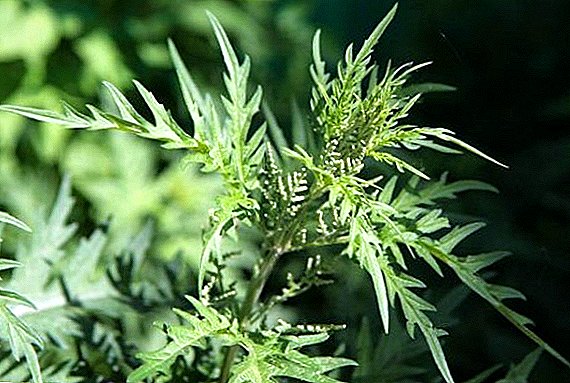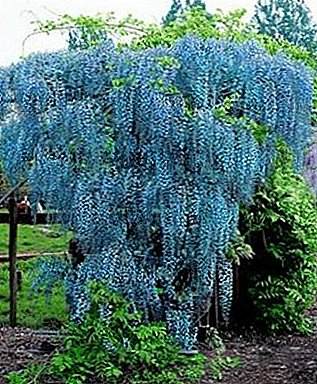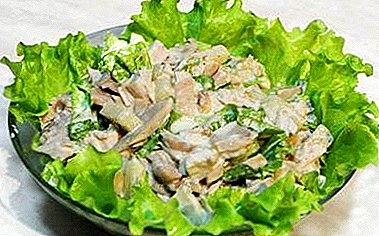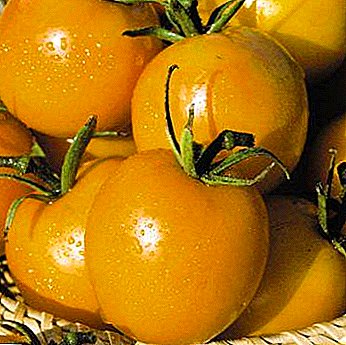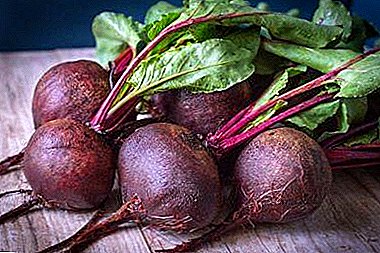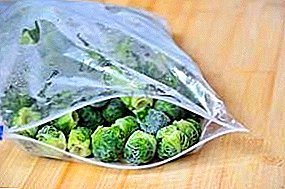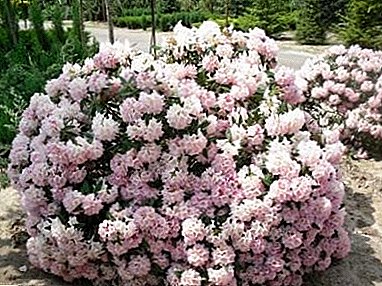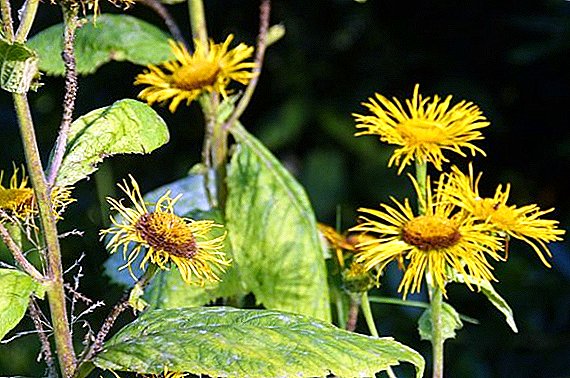 A tall herbaceous plant nyasil is a popular folk remedy against many diseases - a description of its beneficial properties and contraindications, as well as a photo later in the article.
A tall herbaceous plant nyasil is a popular folk remedy against many diseases - a description of its beneficial properties and contraindications, as well as a photo later in the article.
Description
Perennial plant grows to 1.5-2 meters. Rhizome short, fleshy, with small roots. The leaves are elongated, pointed. Stem dense and straight, ends with large yellow or orange flowers.
Flowering occurs from July to September, the fruits appear in August and September.
Did you know? Necvile is known since antiquity: it is covered with legends and revered. The ancient name of it "Inula" happened on behalf of the daughter of Zeus. Another legend claims that this grass has nine powers - it removes damage, the evil eye, helps from love spells and much more.
 Other names of the plant: wild sunflower, virgin, oman.
Other names of the plant: wild sunflower, virgin, oman.When we speak of devyasil, we speak of the root, but its herb also has its own healing properties. This is due to the unique composition of the plant.
Perennial composition
The composition of rhizomes include:
- Inulin and inulenin - polysaccharides, natural sources of energy. They strengthen the bonds of cells in the tissues of the body.
- Resins (gum) - has bactericidal and laxative properties.
- Slime - thanks to her, the plant has anti-antiphasic properties.
- Alkaloids - natural anesthetic, antispasmodic. It also has soothing properties.
- Vitamin E (tocopherol) - useful for skin and blood formation.
- Essential oil - provides analgesic, sedative, antiseptic properties of elecampane.
Inulin is shown to diabetics as a substance that normalizes the amount of sugar in the blood, and inulin is also found in echinacea, scoroner, nivyanik, osote, and girasol.Also included in the composition are saponins, minerals (magnesium, manganese, potassium, calcium), iron, vitamin C.
The useful root devyasila
Such a rich composition explains the anti-inflammatory, expectorant, choleretic properties of the plant. Elecampel is a good sedative, diuretic and diaphoretic qualities. It is used to remove worms. In addition, it is good to use Oman in indigestion, to improve digestion. 
The use of plants in traditional medicine
Such a diverse set of useful qualities could not get around folk herbalists. There is an impressive list of problems for which root devyasila is used: what does it help with? The main potions of traditional medicine will be discussed below.
Decoction
The recipe for decoction is simple: 1 scoop of crushed rhizomes and roots is filled with 1 cup of water, then the mixture is boiled for 10-15 minutes. After that, all leave to infuse for 3-4 hours. It is necessary to filter. Take a decoction of 1 tablespoon 3-4 times a day.
It is used as an expectorant and gastric agent. It helps broth and intestinal diseases. Rinsing decoction helps with inflammation of the throat and mouth. It is also a good antiseptic for washing wounds.
Antiseptic properties have - zhizuchka creeping, momordika, savory garden, physalis, sarratseniya, pear.
Infusion
For the preparation of infusion It is necessary to take 120 g of rhizomes with roots, which pour 0.5 red fortified wine, brew about 10 minutes, then filter. Take the infusion should be 50 g before meals 2-3 times a day.
This infusion tones, has a tonic effect, helps with gastric diseases (gastritis and ulcers). Traditional tincture of vodka: 30-40 grams of the roots and rhizomes of Oman thoroughly chop, then add half a liter of vodka. Insist it all for two days in a dark place, stirring the mixture periodically. After the agent is filtered, it can be consumed 25 drops before a meal. This tincture is useful for diabetes, dropsy, hepatitis.
Did you know? Inulin, which is rich in this plant, has the ability to reduce blood sugar levels.
Ointment
For the treatment of various skin diseases - dermatosis, eczema, rashes of various nature - apply ointment on the basis of elecampane.
One way to prepare such an ointment:
- mix the powder of Oman roots and lard in a ratio of 1: 2;
- mix well and grind;
- The ointment is ready for use, and it can be applied to a sore spot.
How to prepare roots devyasila
Harvesting parts of the plant produced in the fall.
Important! Young plants for collection are not suitable - select only grass older than 2 years.The ground part of the plant is removed, and the roots are dug out. Underground parts are washed, cleaned and dried. Next, the roots are cut into pieces with a length of about 20 mm or less and begin to dry. Drying occurs at a temperature of 40 ° C. The readiness of the roots for use can be determined by eye - by the fragility of the pieces. The appearance of a properly dried raw material will be grayish on the outside, and white on the inside, interspersed with essential oil crystals. This root is suitable for use for 3 years.
Harvesting can also be carried out in the spring, the procedure does not change.
Harm and contraindications
Root elecampane, in addition to medicinal properties, has its side effects and contraindications.
Important! Elecampane is a poisonous plant. Do not exceed the standard ingredients listed in the recipe. Do not make concentrated formulations - it only hurts, and does not speed up the treatment. Symptoms of overdose are weakness, nausea, and excessive salivation.Although Oman can be used in gynecology, during pregnancy, products based on this herb can be dangerous - there is a risk of abortion. Carefully use the plant for heart and kidney disease. Nine is contraindicated in case of increased blood viscosity, intestinal diseases with atonic constipation.
Colds, pains, stomach upsets are all frequent troubles for any person. It is for such cases that you keep at home a drug with a bastard and be healthy.


